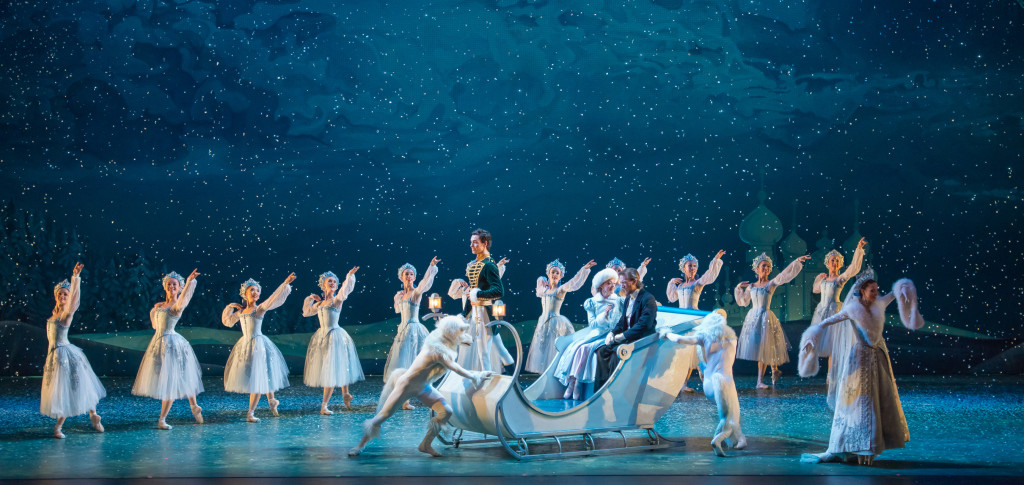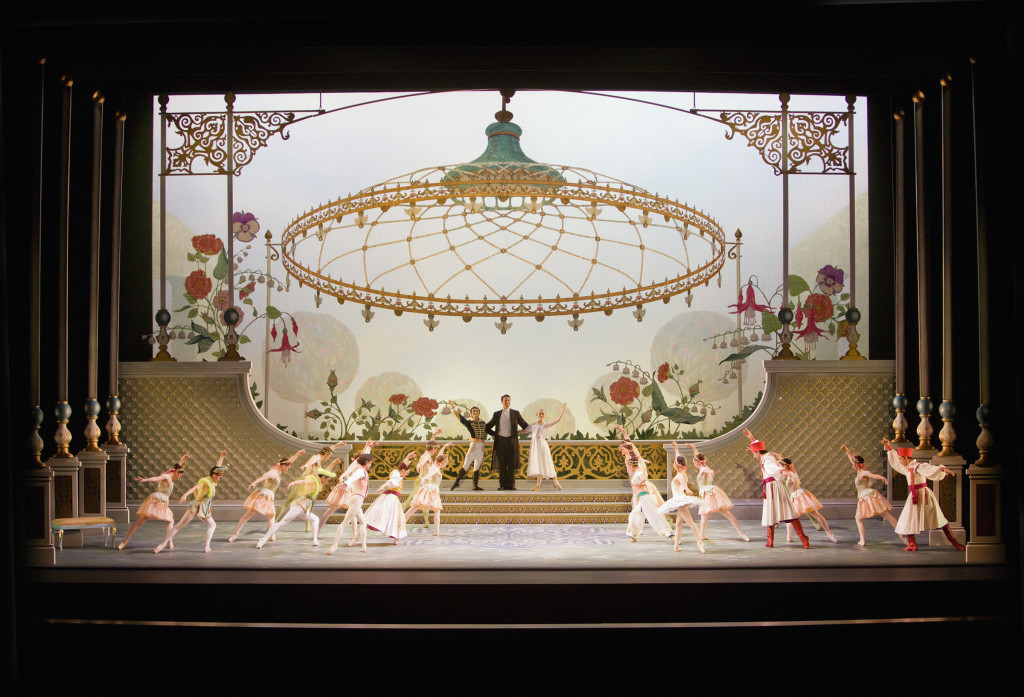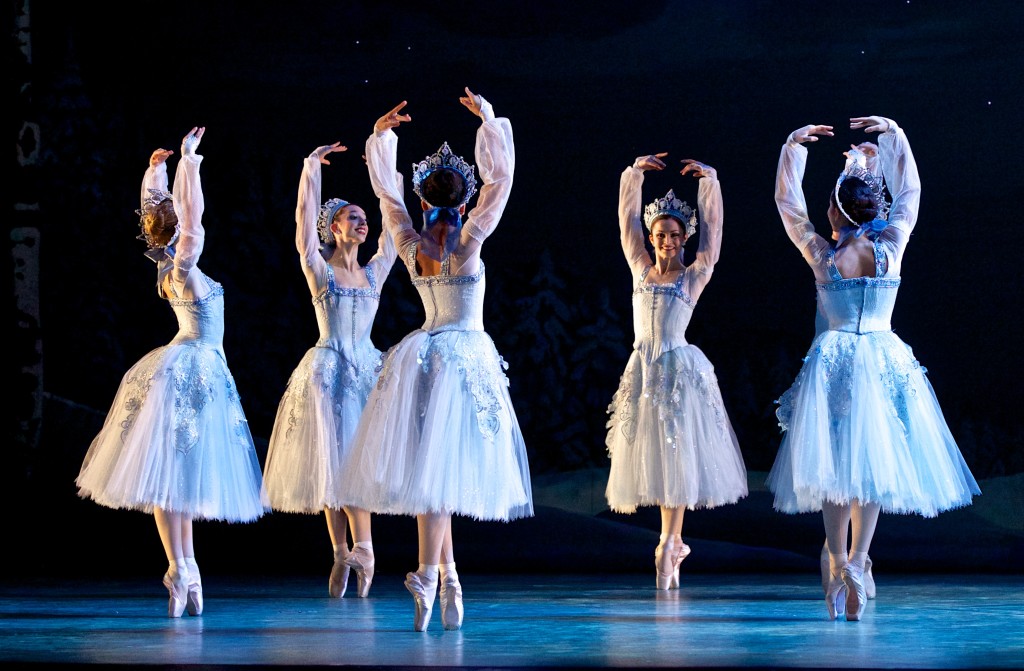What is Christmas without a visit to “The Nutcracker”? A tedious affair, surely. Ballet BC has Vancouver covered for all its Nutcracker needs, with a lavish post-Christmas presentation by the Alberta Ballet. The beloved holiday Ballet will run at the Queen Elizabeth Theatre for the last three days of December this year. All the more reason to get your tickets right this moment. “The Nutcracker” tells the story of Clara whose Nutcracker toy turns into a handsome prince on Christmas Eve and whisks her away into the kingdom of the ever-fabulous Sugarplum Fairy. Add to this a highly recognisable and poignantly memorable Tchaikovsky musical score, and you have a Christmas explosion of merriment. This Alberta Ballet production is designed by the prodigiously talented Zack Brown and choreographed by one of the most highly regarded figures of the Ballet world, Edmund Stripe. Stripe’s career has taken him from dancing to choreography to teaching and far, far beyond. His resume is packed with Ballet goodness. Trained at the Royal Ballet School in London, Stripe went on to dance at the Ballet Gulbenkian of Portugal, the London City Ballet, and the West Australian Ballet. During his time at these Ballet companies, he created numerous works for the companies themselves and for outside commissions. Stripe then assumed the position of Ballet Master at Singapore Dance Theatre and later at School of Alberta Ballet where he has now been Artistic Director since July of 2013. Edmund’s resume is a lesson in dedication even for the best of us. I tried to get him to spill the beans on his success and to divulge in all the hot goss behind this season’s “Nutcracker”.
You have had an illustrious career as a student of dance, then Principal Dancer, then Choreographer, then Ballet Master and now Artistic Director. Did you ever envision your career unfolding this way?
All the things I’ve been doing throughout my career have all overlapped in some shape or form. When I was a student I was already choreographing. After I became a professional dancer I continued to choreograph. I developed an interest in teaching as a second career after my dance career. Then I became Ballet Masters with several companies, which is a follow up from the teaching, if you like. I had the rich experience of being a Ballet dancer and a Classical Ballet dancer, as well. Eventually, I ended up here as the Artistic Director of the Alberta school which I must say is a little unexpected, as far as my life plan was concerned, but quite a wonderful career move. My career evolved over a period of several years. I didn’t actually plan on doing one thing after another.
“The Nutcracker” is all set to open at The Queen Elizabeth Theatre in Vancouver on December 29th. How are the preparations going?
The preparations are going quite well. We actually open in Victoria this week. The dancers have been preparing for at least three weeks, I believe. Because I work at the school so much now, I haven’t really been involved with a lot of the preparations. I have gone into the studio and have watched a couple of rehearsals just to make a few tweaks and to make sure they are doing everything to my satisfaction! The exciting part of it all is that this particular year at “The Nutcracker”, we are including our Alberta Ballet II students. The Alberta Ballet II is a second company of sixteen dancers. It is part of the school’s program. The program is free so the students don’t have to pay for their tuition. Whenever the company needs extra dancers, like they always do for “The Nutcracker”, the Alberta Ballet II dancers are available to the company to swell the ranks, as it were. So I’m very excited about that!
“The Nutcracker” premiered in Vancouver in 2010. Have you incorporated a lot of changes since then?
It is the same production we have been bringing to Vancouver for quite a few years now. The production was created in 2008. It is into its eighth year now but it hasn’t been to Vancouver eight times. I think it has been there about three or four times. Nothing has really changed, as far as the choreography is concerned, but certainly there are different dancers doing different roles. There are sixty to a hundred children involved in the production each year, as well. All of them are taught locally or coached locally. One of our Ballet Masters goes over to each city and basically trains the dancers there. There are so many elements, so many different people doing different roles and the children are all different each year. That gives it a kind of freshness every time. It makes the experience absolutely unique each year even though the choreography is exactly the same.
When you originally created the choreography do you remember what your vision for the production was? Is your interpretation of this holiday classic different from what the general public usually expects?
When we were creating the overall vision for the Ballet, my designer Zack Brown and I sat down and we talked about where we were going to base the ballet. In many of the productions “The Nutcracker” is based in Germany. We decided that we were going to base our production in Russia. So a lot of the choreography that I fell back on has a very, very Russian feel to it. So long lines and always beautiful legs and feet. There are certain moves that are derived from the Russian system of dancing.
The sets and the costumes in the promotional photos are extravagant. Did you have to work with the designers closely and feed off of their input for your choreography?
Absolutely. The costume designer and the set designer are the same person- Zack Brown. Zack is an Emmy-award winning set designer and costume designer. He sent his portfolio in to me as early as 2007. We opened his portfolio and his costume designs were absolutely stunning. It was almost an instant decision and we had to hire the guy straight away.
What about the crew of dancers for this production?
Well all the dancers are from the Alberta Ballet Company. The principal roles are all danced by them. And like I said, there is the addition of the Alberta Ballet II dancers this year. We also have one guest principal artist who is coming over to dance with us from Cuba. Unfortunately because I don’t work at the company as such, I haven’t had a chance to see her dance yet. But I will get to see her on stage. Her name is Reyes Xiomara. She will be dancing the role of the Sugarplum Fairy.
What is your process like when you choreograph something new? How do dances come to you?
For me, seven times out of ten, I would say I hear a piece of music and it inspires me to create a dance to that music. The other three times I would say I either have a story or I am given a commission and told what to do. Then I try to find a piece of music to fit that particular story or idea. The latter happens quite a lot. As far as the actual creation of the dance goes, I am very open to other people’s ideas. Especially the dancers’ ideas, when they are in the studio. I very rarely create any form of movement as such outside of the studio. I like to go into the studio with the dancers and experiment. The studio is like my laboratory. A lot of the time the dancers will attempt to do what I had originally thought of, and they might make a mistake, and it will look better than my original idea. So for me it is a very collaborative process. It’s not just me cracking the whip saying this is what you’re going to do.
Ballet BC focuses a lot on updating ballet and giving it a contemporary feel. Does the School of Alberta have a similar vision? How different are the two schools’ styles and where do you fit in as a choreographer?
Ballet BC has become an exclusively Contemporary dance company since Emily Molnar took over. Emily and I have worked together many, many times. When I was in my capacity as Ballet Master with the company, Emily had come over and created several pieces for the Alberta Ballet, which I insisted on. So we know each other very well. One of the very first things I did at the school was to implement a new, dedicated Contemporary dance stream; instead of having just one stream of dance for the Classical Ballet dancers- the Professional Division, we call it. It took two years to get the program together and it was launched this September. The students actually had their very first performance last Friday at our winter showcase. So I’m very, very pleased with that there. I have come into the school with a very open mind in terms of expanding the horizons of the school in Contemporary dance. And also with the expressed intention of finding employment for students at companies like Ballet BC and companies around the world.
Is it important to keep reinventing dance in order to keep it relevant and up-to-date?
Oh absolutely. That’s what I do all the time when I have my choreographer hat on. As the Director of the school I have had to maintain a certain standard of classical dance but these days dancers have to know everything. I won’t say they can’t just focus on Classical Ballet but they shouldn’t. Companies throughout the world like the National Ballet, the Royal Ballet, and all the big, major companies in the world, none of them do just exclusively Classical Ballet anymore. Every dancer has to have some background or experience in Contemporary dance of some kind. I was trained as a Classical Ballet dancer and I always thought I was going to be just a Classical Ballet dancer. But the very first job I ever got was at a Contemporary dance company. So that was a bit of an eye-opener for me! But yes, all students these days have to have a balance between Classical Ballet training and Contemporary dance training. It is essential.
What is the most challenging choreography you have had to do? Did you ever have to choreograph to music you weren’t into?
As a dancer there are many times that you are on stage, or in the studio, dancing to music you don’t like, because that’s the way of the choreographer or producer. I can’t say I have choreographed to music I didn’t like. I’ve had some very interesting challenges. For instance, for the next two years, I have been asked to collaborate with a choir and an orchestra here in Calgary, to create Stravinsky’s “Symphony of Psalms”. I actually danced a Ballet to this piece many years ago but I don’t remember the music so much. I went back to revisit the music a week or so ago. It’s going to be very, very challenging because it is not a piece of music that I’m immediately drawn to as a choreographer. But I have listened to it a few times now and I’m starting to love it!
The most challenging thing for me is time span. I usually find I’m running out of time to create the piece. If I’m under pressure for a particular time frame it can be challenging.
If you had time you could keep working on it forever.
Oh yes, there is a famous quote by this famous choreographer, Frederick Ashton. Somebody asked him “How much time do you need to create a Ballet?” and he famously said, “Always one more week”. That is quite often the case. If we only had one more week or another few days! But there is always a show that goes on.
Do you enjoy teaching dance as much as you enjoy dancing itself?
I think I enjoy teaching more than I do dancing, but I haven’t danced now for nearly seventeen years! But I’m still pretty active as far as dancing goes. I do enjoy the teaching very, very much and the choreographing. That is probably more my forté.
Do you find that dance is making a comeback in the mainstream? With dance shows and dance movies it seems like learning to dance is in vogue again. Do you get a lot more students now?
Yes, there has been a rush of dance series and movies. I personally haven’t seen a great increase in the number of students coming to the school or at least coming to the auditions. But it’s nice that the dancer is now getting acknowledged out there. The movies and series may have an influence. I know a lot of the dancers and the students at the school watch them and are always talking about them, but whether they are actually encouraging people to dance, I’m not quite sure.
How do you think kids can be encouraged to get into dance?
We advertise and we do what we can to encourage kids to come to the auditions. I don’t think you can go out on to the streets and convince anybody who isn’t interested in dance to start dancing. As far as intake into the school goes, we go out there and audition. We recruit dancers from around the country. It’s not a question of trying to get people who aren’t dancers dancing. For us it’s more about making people aware of the school, of what we do and how we can help them in their career.
Do you think everyone is a dancer?
Oh, everyone can dance! Whether they realise it or not. Or whether they wish to express that desire to dance or not. Everyone can dance in some shape or form. It is one of man’s most instinctive qualities. Dance is essential. Dance and music. Those are the cornerstones of humankind since the dawn of time.
What qualities are needed to become an extraordinary Ballet dancer?
Musicality. To be a Classical Ballet dancer you’ve got to have a reasonably good body, which isn’t always the case. Guts, determination. Bravery. All those things. Commitment. Be willing to give up certain things and make certain sacrifices. It is a very, very hard life. It looks all kind of glamorous on the outside but it is a big, big, big commitment and it is a very, very, very hard career path to take. You have to have that drive. As well as have a nice body, long legs, beautiful feet and beautiful technique. That’s the icing on the cake. There is a lot of work underneath that you don’t see.
Bit of a random question but why don’t men dance?
They do! There has always been a stigma attached to men dancing, that it’s pouffy or whatever you want to call it. But it is one of the hardest things that anybody can do. You’d be surprised at how many Ballet dancers there are throughout the world. Perhaps not here in Canada or perhaps not here in Calgary, but certainly the male-female ratio in the big companies is fifty-fifty. Men dancing are deemed effeminate, which is absolutely ridiculous. You can’t tell that to a seasoned hockey fan or a basketball fan. Or maybe you can, I’m not sure! I would disagree with the statement that men don’t dance.
Were you encouraged as a child to dance?
My parents were both Balletomanes. They grew up during the war and they would go to Covent Garden almost every night. In the mid-sixties they started taking me to the Ballet as well. They didn’t really encourage me but I basically just looked at it and said, “I’d kind of like to do that!” That was when I was about four and I haven’t really stopped since. My teachers were all very encouraging as all good teachers should be. The actual decision for me to start dancing was more my own than anybody else’s. As much of a decision you can make as a four-year old. I started when I was three and three-quarters actually, and I am sixty-four now, so you can do the maths for that one!
What emotions do you think the nutcracker evokes that is so holiday-ey and Christmassy?
(Laughs) I have a love-hate relationship with this Ballet! People love it, especially this production. It has very much become a part of people’s rituals for Christmas. You have your turkeys and mince pies, and it has become a part of those Christmas traditions. If you don’t go to “The Nutcracker” it’s not Christmas! I really think people have written it into their diaries and into their traditions. It is a lovely production and I just think it brings a lot of joy to a lot of people.
What advice helped you the most in your career and that you would give to aspiring dancers?
Don’t give up!
Get your tickets here!
-Prachi Kamble




